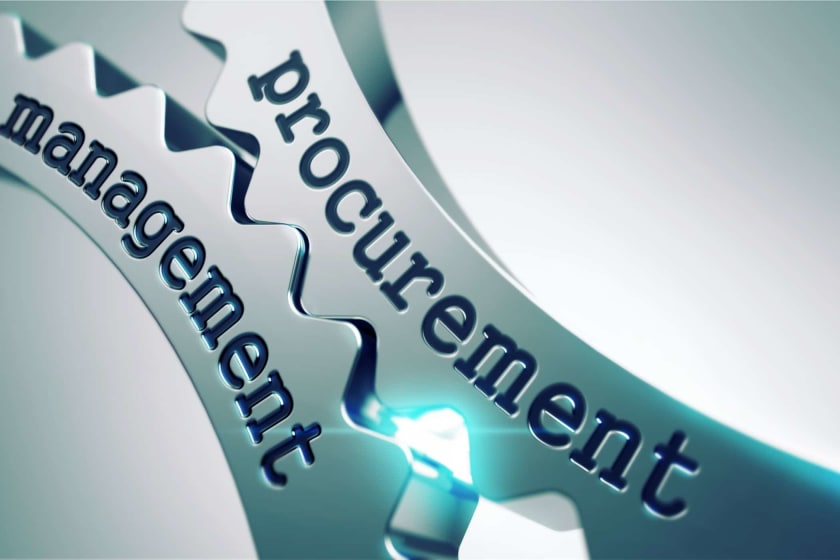Procurement and Category Management in a Fashion Company



Running a fashion company is a specialized skill and involves all the business processes one can associate with any other business. Anyone who has run a business themselves, or has an interest in how the business operations run on a daily basis, is aware of the importance of procurement management.
Be it sourcing the right raw materials or ensuring timely delivery of the same, the procurement team is responsible for identifying and negotiating with the vendors. The primary responsibility of any procurement team is to assess the options available to them and shortlist the vendors that can fulfil the company’s demands on time, at minimum cost, and with the highest quality raw material. Missing out on any one of these may have an impact on the company’s production process and consequently, on the profits.
If you are running a fashion company, imagine the situation where your fabric is not delivered on time. Or, it gets delivered but is not of good quality and comes with a lot of tears! It will turn out to be a complete nightmare, especially if you are prepping to launch your next collection in a short time frame. This simple example aptly summarizes the importance of procurement management in a fashion company.
Now that we understand the significance of procurement, let us look at some of the typical items that are procured within a fashion company. Fabric, buttons, zippers, sequins, chains, laces, etc., the list can go on and on. If the procurement team goes on buying each of these products separately, they may end up buying from a lot of different suppliers based on the price, availability, and other factors. But this means that you will have to keep waiting till all the required materials are available for putting together one design. Also, buying from different suppliers will entail a higher cost due to separate shipping charges from each supplier.
Category Management
The solution that is widely used in the retail and fashion industry to avoid the issues with separate procurement as described above is known as category management. In its simplest form, category management can be defined as bundling together separate items in a way to optimize costs as well as to ensure the uninterrupted production of a complete product. Alternatively, this is how product classification is done.
In the context of the fashion industry, this can be understood with the following example. The final products of fashion brands can be grouped into different categories like apparel, footwear, accessories, etc. Another way of classification is sportswear, womenswear, menswear, swimwear, etc. Depending on how the first level category is defined, the next level classification can happen. Thus, the category “Apparel” can have T-shirts, skirts, as well as formal shirts, and blazers. On the other hand, the category “Sportswear” will consist of T-shirts, shoes, socks, pouch, etc.
Category definition is the first step of category management. We will not go into too much detail about how categories are defined, but suffice it to say that categories can broadly be of four types.
- Core Categories – These are the categories that define the brand. For Nike, this includes sports shoes.
- Destination Categories – These categories are not the core offering, yet drive traffic to the brand. For example, for Adidas, the core offering is the sports shoe, but the destination category is the T-Shirt with the Adidas logo.
- Convenience Categories – These are neither the core nor the destination categories, but consist of products that are useful with the core category, and are in constant demand. For example, shoelaces with Nike shoes.
- Seasonal Categories – These are seasonal or limited-time products that the brand may launch to drive sales. For example, umbrellas with the Adidas or Nike logo.
Each of these categories has a different purpose, and therefore, must be clearly defined for effective category management. While the core categories drive the profit and brand awareness, the destination categories are expected to bring in the customers. The destination categories are not expected to make profits.
Team Structures

With a better understanding of procurement management as well as category management, this is the right time to take a look at the team structures in both departments. What are the different roles required in each method and what are the typical profiles for the members in these roles? This is defined further in detail in the following section.
Procurement Department
The procurement department is responsible for the overall procurements within a company. The typical roles in any procurement department include the following.
- Purchasing Manager – The overall head of the department, the Purchasing Manager/Officer is responsible for ensuring the procurement management practices provide the best returns for the company. They overlook the procurement for the entire company. To achieve the best results, the Purchasing Manager needs to collaborate with all department heads and must be aware of the company’s policies.
- Purchasing Agent – The Purchasing Agent is in charge of buying raw materials and other supplies for consumption within their company. In a typical fashion company, this may refer to someone who sources, negotiates, and finally purchases materials like fabrics, accessories, etc.
- Buyer – While the role of the Purchasing Agent and the Buyer may appear similar, there is a slight difference. The Buyer is someone who sources, negotiates, and finally purchases products to be resold by their company. For example, if your company is an e-Commerce supplier of T-shirts, the Buyer will be responsible for sourcing T-Shirts from different sellers.
Category Management Department

The goals of category management differ significantly from procurement management. Thus, the roles and responsibilities also differ vastly. An important point to consider when opting for category management is that one category of a company must not compete or undercut another category of the same company.
The category team is responsible for overall categories, and this includes space planning, visual display planning, promotions, and definitely purchase. Thus, category teams may have procurement teams embedded within them for procurement related to the specific category. With that background, let us look at the various roles within a category team.
- Category Manager – This role is the highest authority in a particular category team and is responsible for the P&L of the category. The Category Manager is an important player in the overall strategy team of the organization and running the business operations. They are expected to understand the demands and predictions of the products in their category and drive the overall category to achieve the pre-defined goals. For core categories, this may entail ensuring profits, while for destination categories, this may mean driving traffic to the company’s outlets.
- Space Planning Manager – Once the customer is in the outlet, the products must be placed in such a manner that they are easily accessible to the customer. For driving promotions, the products need to be laid out in such a visually appealing manner that the customer decides to make a purchase. This planning also needs to be done, keeping in mind the space availability and optimizing product display. All these are the responsibilities of the space planning manager. Within a category, the space planning manager needs to ensure the planning to afford the best visibility to the products of their category.
- Category Pricing Manager – As we have seen, the different types of categories have different purposes. The pricing of the products within a category must be defined in a manner so as to achieve this purpose. This is the responsibility of the pricing manager within a category.
- Category Marketing Manager – This is one of the most prominent roles within a category. Effective Category Management requires the products of the defined category to achieve different goals. This is possible only when the customers are aware of the products, which in turn is the basic responsibility of the Marketing Manager.
- Purchasing Agent / Buyer – As discussed earlier, every category needs to have a purchasing agent or buyer, depending on the products, to ensure the optimum utilization of buying offers. Whether it is identifying closely located vendors or getting the best discounts for the overall procurement, the buyer needs to take care of these aspects within their own category.
Wrapping Up
In this blog, we took a look at the differences between procurement management and category management. We analyzed the differences and motivations for both when it comes to fashion brands. Then, we did a deep dive into the team structures of the two teams that may be present in a fashion company. If you like such informative discussions, you can find more information on Fashinza.
An end-to-end B2B platform for all players in the fashion industry, this is where you can find peers, suppliers, manufacturers, and brands interacting with each other. You can find the materials you are looking for, place an order, and get them delivered to your facility. Or, you can read detailed articles on all things relevant to the industry. To find more information, and become a part of the community, visit the Fashinza website or app today.



















